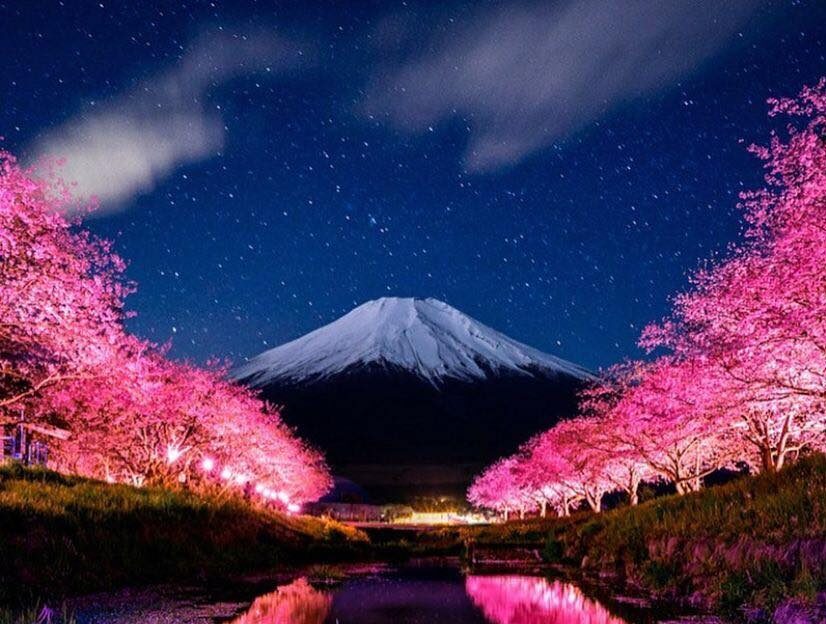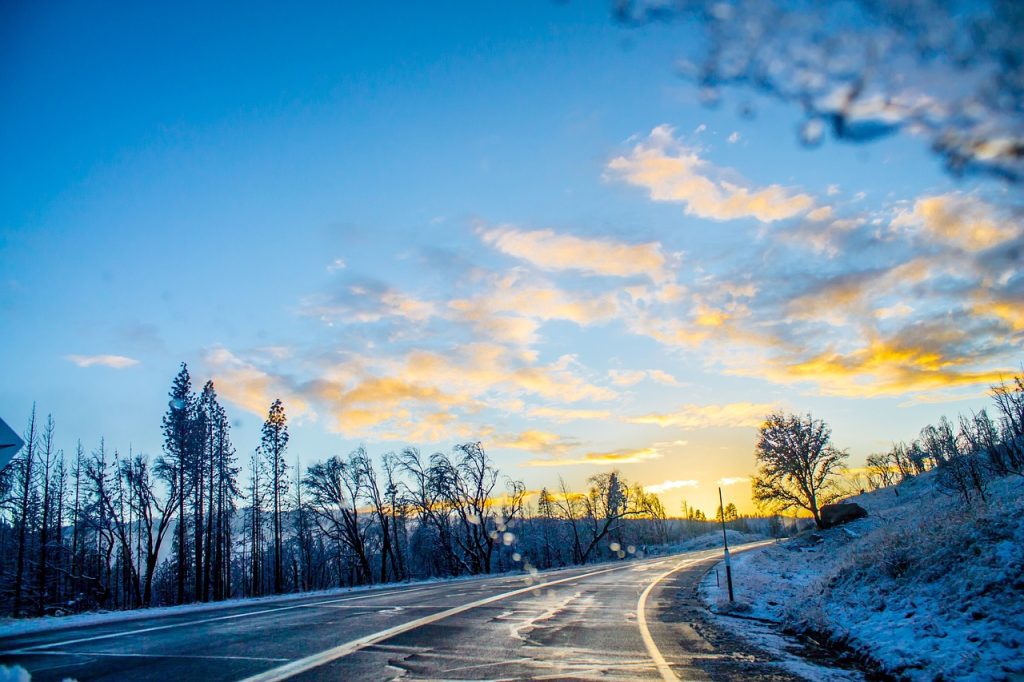Japan is a country with a rich cultural heritage, stunning natural landscapes, and a mix of modern and traditional attractions. With its futuristic vibes, historical sites, staggering number of restaurants, and deep bench of hotel options, it’s difficult to pass up. In one sleek bullet train journey, you can travel from the dense, neon-lit streets of Tokyo to the fresh, clean air of the Japanese Alps. Buddhist temples dot the country, or see the cherry blossoms in the spring. Here are some of the best places to visit in Japan:
- Tokyo: The capital city is a bustling metropolis with a mix of modern skyscrapers and historic temples. Don’t miss attractions like the Tokyo Tower, Meiji Shrine, and the bustling neighborhoods of Shibuya and Shinjuku.
- Kyoto: Known for its well-preserved temples, traditional tea houses, and beautiful gardens, Kyoto is a city that captures the essence of traditional Japan. Visit the Fushimi Inari Shrine, Kinkaku-ji (Golden Pavilion), and the historic Gion district.
- Osaka: Famous for its street food and vibrant nightlife, Osaka is a food lover’s paradise. Explore Osaka Castle, Universal Studios Japan, and the bustling Dotonbori district.
- Hiroshima: Visit the Peace Memorial Park and Museum to learn about the city’s history and the impact of the atomic bomb during World War II. Miyajima Island, known for its iconic “floating” torii gate, is also nearby.
- Nara: Home to friendly deer that roam freely in Nara Park, this city is also known for Todai-ji Temple, housing a giant Buddha statue, and the beautiful Kasuga Taisha Shrine.
- Hokkaido: Japan’s northernmost island is known for its beautiful landscapes, hot springs, and winter sports. Sapporo, the capital, is famous for its annual Snow Festival.
- Hakone: A popular hot springs destination near Tokyo, Hakone offers stunning views of Mount Fuji, hot springs (onsen), and traditional ryokan accommodations.
- Nikko: Known for its ornate shrines and natural beauty, Nikko is a UNESCO World Heritage site. Toshogu Shrine, with its intricate carvings and architecture, is a must-visit.
- Kanazawa: This city is famous for its well-preserved Edo-era districts, Kenrokuen Garden (one of Japan’s three most beautiful gardens), and the Nagamachi samurai district.
- Ishigaki: If you’re interested in tropical paradises, Ishigaki in the Okinawa Prefecture offers beautiful beaches, coral reefs, and a unique cultural experience.
Remember that Japan has a well-developed and efficient transportation system, including the Shinkansen (bullet train), making it relatively easy to explore various regions of the country. Each season brings its own charm, so the best time to visit depends on your preferences, whether it’s cherry blossoms in spring, vibrant autumn foliage, or winter sports in the colder months.
Cherry blossoms, or “sakura” in Japanese, are one of the most iconic symbols of Japan. The blossoming of cherry trees is a highly anticipated and celebrated event that marks the arrival of spring. Here are some key points about cherry blossoms in Japan:
- Timing of Blooming:
- The cherry blossoms typically bloom in spring, usually between late March and early May, depending on the location and weather conditions.
- The exact timing can vary from year to year and is influenced by factors such as temperature, location, and altitude.
- Hanami (Cherry Blossom Viewing):
- Hanami refers to the tradition of appreciating the beauty of cherry blossoms, often by having picnics or strolling under the blooming trees.
- Many parks and public spaces in Japan, as well as historic sites and temples, become popular hanami spots during this season.
- Popular Sakura Spots:
- Some of the most famous places to view cherry blossoms include Ueno Park and Shinjuku Gyoen in Tokyo, Maruyama Park in Kyoto, and Philosopher’s Path in Kyoto.
- Himeji Castle, Mount Yoshino, and the Hirosaki Castle Park are also renowned for their cherry blossoms.
- Cherry Blossom Forecast:
- The Japan Meteorological Corporation releases a cherry blossom forecast (sakura-zensen) each year, predicting when the blossoms will start and be in full bloom in different regions of Japan.
- Nighttime Illuminations:
- Some popular cherry blossom spots offer nighttime illuminations, creating a magical atmosphere. This is known as “yozakura” (nighttime sakura viewing).
- Cherry Blossom Festivals:
- Many regions host cherry blossom festivals, featuring food stalls, performances, and other cultural events. These festivals vary in scale and duration.
- Cherry Blossom Varieties:
- There are several varieties of cherry blossoms with different colors and shapes. Some of the most well-known include Somei Yoshino, with pale pink flowers, and Shidare-zakura, known for its cascading branches.
- Symbolism:
- Cherry blossoms hold cultural significance in Japan and symbolize the transient nature of life. The fleeting beauty of the blossoms is often associated with the concept of “mono no aware” or the appreciation of impermanence.
If you plan to visit Japan during cherry blossom season, it’s advisable to check the cherry blossom forecast for the specific regions you intend to visit and plan your trip accordingly. Keep in mind that this is a popular time for both domestic and international tourists, so accommodations and transportation may be in high demand.
Japan offers a wide range of accommodation options, from traditional ryokans to modern luxury hotels. The best hotel for you depends on your preferences, budget, and the location you plan to visit. Here are some highly regarded hotels:
- Hotel New Otani Tokyo Garden Tower: This Hotel is HUGE. It comes with its own Japanese garden (with waterfall), shopping mall, spa, supermarket, convenience store, various restaurants, etc.
- The Ritz-Carlton, Kyoto (Kyoto):
- Situated on the banks of the Kamogawa River, The Ritz-Carlton, Kyoto, combines traditional Japanese design with modern luxury. It’s conveniently located near popular attractions.
Traditional Ryokans:
- Gora Kadan (Hakone):
- A luxurious ryokan in Hakone, Gora Kadan offers traditional Japanese hospitality, hot springs, and kaiseki cuisine in a serene setting.
- Hiiragiya Ryokan (Kyoto):
- Established in 1818, Hiiragiya is one of Kyoto’s oldest and most prestigious ryokans, providing a quintessential Japanese experience.
- Aburaya Tousen: One of the more luxurious ryokans in Yudanaka, the Aburaya Tousen Ryokan is a great place to unwind after a day of walking and exploring — the open-air bathrooms are particularly good for this.
When choosing a hotel, consider factors such as location, amenities, and your personal preferences. Additionally, booking well in advance is advisable, especially during peak travel seasons and events.








viagra online fast shipping
Insightful piece
zoloft vs prozac
flagyl dose for diverticulitis uptodate
lisinopril how long does it take to work
furosemide protein binding
glucophage sklad
generic for zithromax
gabapentin long term side effects
amoxicillin dosage for tooth infection
is escitalopram and citalopram the same
can i take ibuprofen with cephalexin 500mg
ciprofloxacin contraindications
bactrim ds for sinus infection
does cephalexin make you sleepy
amoxicillin rash pictures
will cephalexin help a sinus infection
does bactrim treat staph
escitalopram uses
gabapentin for dogs side effects panting
cozaar 20 mg
ddavp dose pre op
depakote ec
citalopram side effect
cozaar 50 mg uses
ddavp oral to iv conversion
another name for depakote
pregnant while taking citalopram on 20mg
afib diltiazem
diclofenac sodico
ezetimibe 2012
flomax food
I was wondering if you ever thought of changing the layout of your blog?
Its very well written; I love what youve got to
say. But maybe you could a little more in the way of content so people could connect with it better.
Youve got an awful lot of text for only having one or 2 pictures.
Maybe you could space it out better?
contrave schedule
Excellent post. I was checking constantly this blog and I’m impressed!
Extremely useful information specially the last
part 🙂 I care for such info a lot. I was looking for this particular info for a long time.
Thank you and good luck.
flexeril recreational
can you drink alcohol with amitriptyline
aspirin daily
the nurse knows that the patient taking aripiprazole 20 mg day po requires which specifid
best time of day to take allopurinol
bupropion effects
augmentin for acne
baclofen trial
celebrex coupon
buspar generic
celexa hair loss
ashwagandha and anxiety
cost of celecoxib 200 mg
vraylar vs abilify
acarbose brands
side effects of semaglutide
actos periscope
Insightful piece
repaglinide cost
protonix davis
will robaxin show up on a drug test
remeron lawsuit
best rogue online pharmacy
repaglinide nomi commerciali
sitagliptin 25mg tab
zithromax 100 mg
spironolactone joint pain reddit
ciprofloxacin synthroid
ivermectin 200mg
what is the alternative to voltaren
what is tizanidine used for?
is venlafaxine a narcotic
why does tamsulosin cause retrograde ejaculation
zetia medication
zofran breathing
is zyprexa an ssri
effects of crushing wellbutrin
zofran actions
valtrex without presciption
zyprexa for pain
I don’t think the title of your article matches the content lol. Just kidding, mainly because I had some doubts after reading the article.
canada pharmacy happy family store